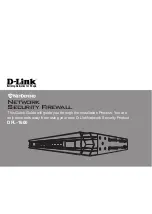
Switching the Power Supply On and Off
The power supply on/off switch is located on the front panel. When
plugged in and switched on, a red front panel LED will glow. Since the
Model 1000R16 is a "hot swappable" rack,
it is not necessary for any
cards to be installed before switching on the power supply. The power
supply may be switched off at any time without harming the installed
cards.
NOTE:
Please refer to the Model 1000RP Series User Manual
AC
and DC Rack Mount Power Supplies for fuse and power card
replacement information.
4.2 INSTALLING THE MODEL 1060RC INTO THE CHASSIS
The Model 1060RC is comprised of a front "brains" card and a rear
"connections" card. The two cards meet inside the rack chassis and
plug into each other by way of mating 50 pin card edge connectors.
Use the following steps as a guideline for installing each Model 1060RC
into the Model 1000R16 rack chassis:
1. Slide the rear "connections" card into the back of the
chassis along the metal rails provided.
2. Secure the rear card using the metal screws provided.
3. Slide the "brains" card into the front of the chassis. It should
meet the rear card when it's almost all the way into the
chassis.
4. Push the front card
gently into the card-edge receptacle of
the rear card. It should "click" into place.
5.
Secure the front card using the thumb screws.
NOTE:
Since the Model 1000R16 chassis allows "hot swapping"
of cards, it is
not necessary to power down the rack when you
install or remove a Model 1060RC.
4.3 RS-232 CONNECTION
The Model 1060RC offers two port options for connecting the
RS-232 interface to your computing hardware: DB-25 female and
10-pin RJ-45 female (the RS-232 port is always the
lower port on the
interface card). The DB-25 is pinned according to the RS-232C/V.24
interface standard. The 10-pin RJ-45 is pinned according to the
EIA/TIA-561 interface standard. For specific interface pin-outs, please
refer to the diagrams in Appendix D of this manual.
The Model 1060RC is wired to connect to a DTE. If your RS-232
output device is a DTE, use a
straight though cable to connect to the
Model 1060RC. If your RS-232 output device is DCE, call Patton
Technical Support at (301) 975-1007 for specific installation
instructions.
4.4 TWISTED PAIR CONNECTION
The Model 1060RC operates over two twisted pair. In
all
applications, the twisted pair wire must be 26 AWG or thicker,
unconditioned, dry, metallic wire. Both shielded and unshielded wire
yield favorable results.
Note:
The Model 1060RC can only
communicate in a closed data circuit with another Model 1060RC. Dial-
up analog circuits, such as those used with a standard Hayes-type
modem, are
not acceptable. For further information about acceptable
wire grades, please refer to the diagrams in Appendix B.
4.4.1 Point-to-Point Twisted Pair Connection
The 6-position RJ-11 and 8-position RJ-45 jack options for the
Model 1060RC (always the
upper jack on the rear interface card) are
prewired for a standard TELCO wiring environment. Connection of a
4-wire twisted pair circuit between two or more Model 1060RCs
requires a
crossover cable as shown in the figures below and on the
following page.
RJ-11
SIGNAL
PIN#
COLOR
COLOR PIN#
SIGNAL
GND
1
Blue ..................White
6
GND
RCV-
2
Yellow...............Red
4
XMT-
XMT+
3
Green ...............Black
5
RCV+
XMT-
4
Red ..................Yellow
2
RCV-
RCV+
5
Black ................Green
3
XMT+
GND
6
White ................Blue
1
GND
13
14
Notice!
Any terminal cable connected to the Model
1060RC must be shielded cable, and the outer shield must
be 360 degree bonded–at both ends–to a metal or
metalized backshell.














































